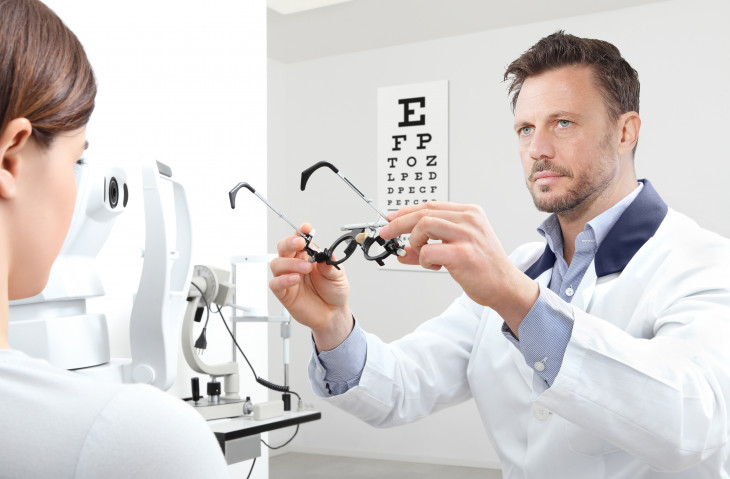Discover the most effective Optometrist Chino for Comprehensive Eye Care
Discover the most effective Optometrist Chino for Comprehensive Eye Care
Blog Article
Exploring the Most Recent Technological Innovations in Optometry and What They Mean for Optometrists
In the ever-evolving field of optometry, current technological innovations are reshaping just how professionals approach eye treatment. From the precision of Optical Comprehensibility Tomography to the nuanced insights supplied by AI-driven diagnostic devices, these developments are establishing new criteria in individual evaluation and therapy. Teleoptometry is positioned to redefine accessibility, making certain that expertise goes beyond geographical limitations. As these innovations permeate the method, optometrists are confronted with the obstacle of embracing these devices to boost client end results. Yet, the concern continues to be: exactly how will these technological changes redefine the duties and responsibilities within the occupation?
Innovations in Diagnostic Tools
Advancing the field of optometry, developments in diagnostic tools have changed the means eye treatment professionals examine and diagnose visual disabilities and ocular conditions. The previous decade has seen considerable technological improvements, making it possible for even more exact and detailed evaluations. Optical Coherence Tomography (OCT), as an example, offers high-resolution cross-sectional photos of the retina, enabling for the early detection of diseases such as glaucoma and age-related macular degeneration. This non-invasive imaging technique has become crucial in contemporary optometric practice.
An additional trick development is the intro of sophisticated corneal topography systems, which map the surface area curvature of the cornea with precision. These tools are specifically helpful for fitting get in touch with lenses and detecting corneal disorders. In addition, digital retinal imaging has changed traditional ophthalmoscopy, using comprehensive, panoramic views of the retina that facilitate extensive aesthetic examinations.
The advancement of wavefront aberrometry has actually additionally been essential, allowing the evaluation of refractive mistakes with unparalleled accuracy (Opticore Optometry). This modern technology aids in tailoring corrective lenses and enhancing medical end results for refractive surgeries. Collectively, these diagnostic developments equip optometrists to supply superior patient care, making certain early intervention and tailored therapy methods, inevitably boosting visual health outcomes
AI in Person Monitoring
Structure on the structure of innovative diagnostic tools, the incorporation of artificial knowledge (AI) in person administration represents a transformative leap for optometry. AI systems are significantly used to improve performance, precision, and customization in individual treatment. By evaluating huge amounts of data, AI can identify patterns and predict prospective eye problems, making it possible for optometrists to customize interventions a lot more successfully. This ability is vital in taking care of persistent eye diseases such as glaucoma and diabetic person retinopathy, where early discovery and continuous surveillance are crucial.
Moreover, AI-driven platforms assist in streamlined individual interactions and administrative procedures. Automated organizing, online appointments, and customized follow-up strategies not just improve person fulfillment but also maximize time management for professionals. These systems can triage patients based on the seriousness of their problems, making certain that those in vital demand obtain prompt attention.
Moreover, AI boosts decision-making by providing optometrists with evidence-based suggestions and treatment paths. By incorporating data from electronic health and wellness documents, AI devices supply insights that inform medical decisions, reducing the danger of errors and enhancing person end results. As AI proceeds to evolve, its role in patient management will likely broaden, reshaping the landscape of optometric care.
Advancements in Retinal Imaging
In the realm of optometry, retinal click here for more imaging has witnessed remarkable technical innovations that are improving diagnostic capabilities and patient care. Developments such as Optical Coherence Tomography (OCT) and fundus digital photography have actually changed just how optometrists imagine and assess the retina.
Improved imaging methods like OCT angiography are further refining analysis accuracy. Eye Doctor. Such advancements assist in the recognition of minute retinal modifications that can signify illness development.
Furthermore, improvements in expert system are increasing retinal imaging by enabling automated analysis of big datasets. These systems aid eye doctors in identifying patterns a sign of pathology, consequently boosting diagnostic accuracy and effectiveness. Jointly, these technologies are transforming retinal imaging into a foundation of contemporary eye treatment, boosting outcomes and expanding healing opportunities.
Teleoptometry's Growing Role
Teleoptometry is progressively ending up being a crucial part of eye treatment, driven by improvements in electronic interaction and diagnostic devices. As optometry accepts digital improvement, teleoptometry assists in remote appointments, permitting eye doctors to prolong their solutions beyond conventional borders. This is especially advantageous in underserved and rural areas where accessibility to specialized eye treatment is commonly restricted. By leveraging high-resolution video conferencing and advanced retinal imaging, eye doctors can perform detailed eye examinations from afar, guaranteeing timely medical diagnosis and therapy.
The combination of expert system (AI) additional enhances teleoptometry, making it possible for the evaluation of visual information and helping in the detection of ocular conditions such as glaucoma and diabetic person retinopathy. AI-powered formulas can rapidly analyze complex imaging information, supplying optometrists with useful insights that boost medical decision-making.
Moreover, teleoptometry sustains continuity of treatment via seamless assimilation with electronic wellness records (EHRs), permitting eye doctors to keep comprehensive patient backgrounds. This ensures that individuals get individualized and regular care even when speaking with different professionals.
In spite of these benefits, challenges stay, consisting of making sure information safety and security and taking care of client assumptions. Teleoptometry represents a substantial stride towards more easily accessible, efficient, and patient-centered eye treatment. As technology develops, its role is poised to broaden additionally.

Future Trends in Eye Care
A myriad of cutting-edge fads is established to improve the future of eye treatment, driven by technical improvements and the progressing requirements of individuals. One considerable pattern is the combination of synthetic intelligence (AI) in diagnostics, which promises to boost the accuracy and effectiveness of eye assessments. AI algorithms can evaluate vast quantities of information from retinal pictures, potentially detecting problems like diabetic person retinopathy and glaucoma earlier than standard methods.
Moreover, personalized medication is obtaining grip in optometry, with genetic testing informing tailored therapy strategies. This technique aims to optimize individual results by tailoring interventions to specific hereditary profiles. Wearable technology, such as clever get in touch with lenses, is likewise coming up, using real-time tracking of intraocular pressure or sugar levels, hence supplying continuous insights right into ocular and systemic health and wellness.
The More Info adoption of increased truth (AR) and virtual truth (VR) in training and person education and learning is another arising pattern. These innovations offer immersive experiences that can boost understanding and skills both for people and optometrists. As these fads advance, optometrists have to stay abreast of technological innovations to give cutting-edge treatment, ensuring improved individual outcomes and contentment in the dynamic landscape of eye care.
Final Thought

Collectively, these analysis improvements equip optometrists to supply premium individual care, guaranteeing early treatment and tailored therapy methods, here are the findings eventually improving visual health end results.

As these modern technologies continue to advance, optometrists have to adjust and incorporate them into practice, eventually maximizing process effectiveness and elevating the requirement of eye treatment provided to patients.
Report this page